If Brussels has its way, in 10 years there will only be electric mobility, but that has not stopped Honda from continuing to invest in the ICE combustion engine. At the EICMA in Milan, a new concept was unveiled that Big Red even calls groundbreaking: a 75 V3 with electric compressor.
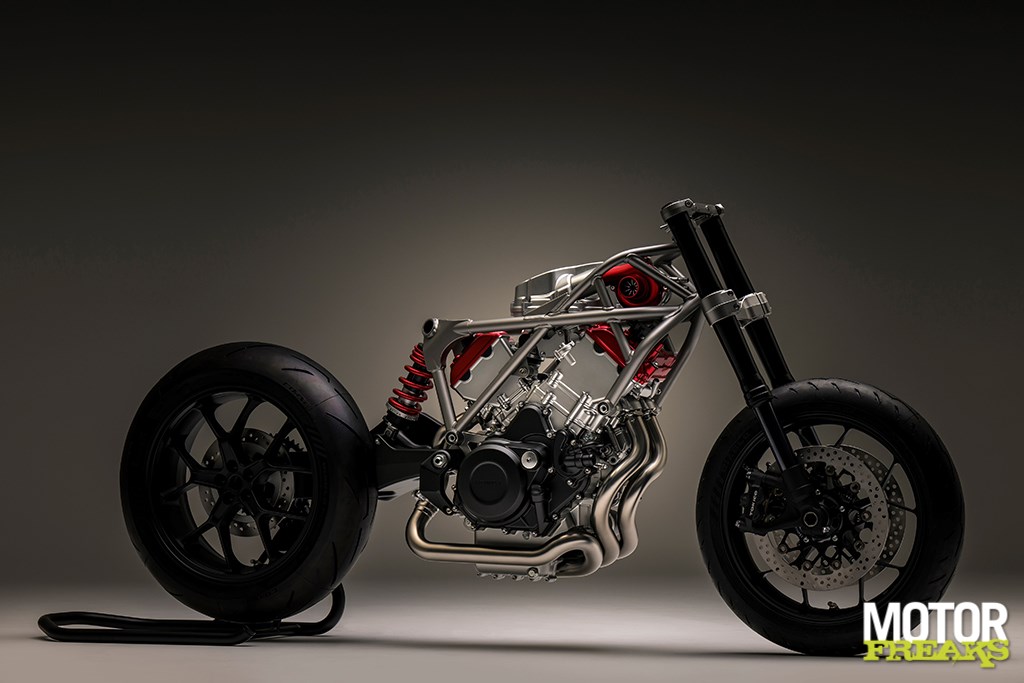
While the turbo has become commonplace in the automotive industry, the higher speeds in motorcycles have always been a stumbling block, because there is always a delay in the thrust – the so-called turbo lag. An alternative to the turbo is the supercharger, which is driven directly by the crankshaft, but this too has so many disadvantages that it has only been used sparingly in the motorcycle industry.
Honda has now come up with a new concept in which the compressor is not driven by exhaust gases or directly, but via an electric motor. This has the great advantage that the inlet pressure can be controlled completely independently of the speed. This technology has been used in Formula 1 since 2014 and Mercedes has already put a number of cars with this technology on the market, where the required power is generated by an electric turbo.
The ICE concept now shown by Honda only has an electric compressor, but does not say how the required energy is generated – no electric turbos are provided in the exhaust system and there is no mention of a hybrid drive.
According to Honda, the water-cooled 75° V3 engine has been newly developed for machines with a larger cylinder capacity and is extremely slim and compact in design. The concept is the world’s first motorcycle ICE with an electric compressor, which, as mentioned, can regulate the compression of the intake air independently of the engine speed, meaning that highly responsive torque can be delivered even from low engine speeds.
In addition, the electric compressor allows a high degree of freedom in the placement of all components in the limited space available on a motorcycle, as well as efficient centralization of the mass. There is also no need for an intercooler.
Honda draws a comparison with the V3 concept with the last V3 for the road, the then groundbreaking NS400R two-stroke from the mid-1980s. Now, 40 years later – and in a completely different world – the potential of this new direction is clear, with “breathtaking possibilities in terms of future models.”
It is still just a concept, but according to Honda, development is continuing to implement this in production models.
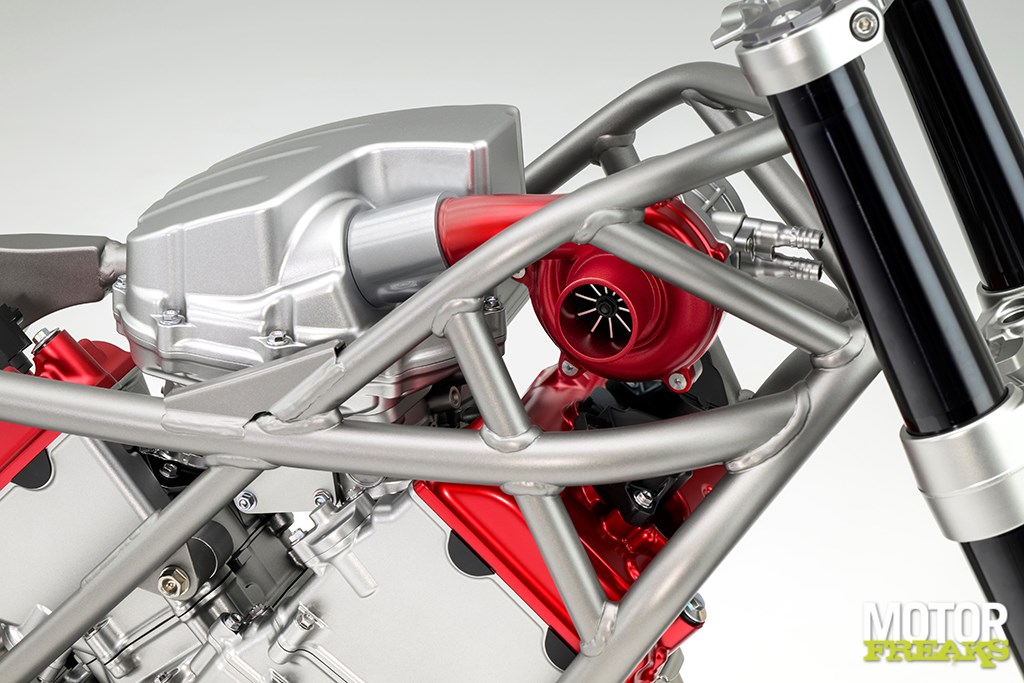

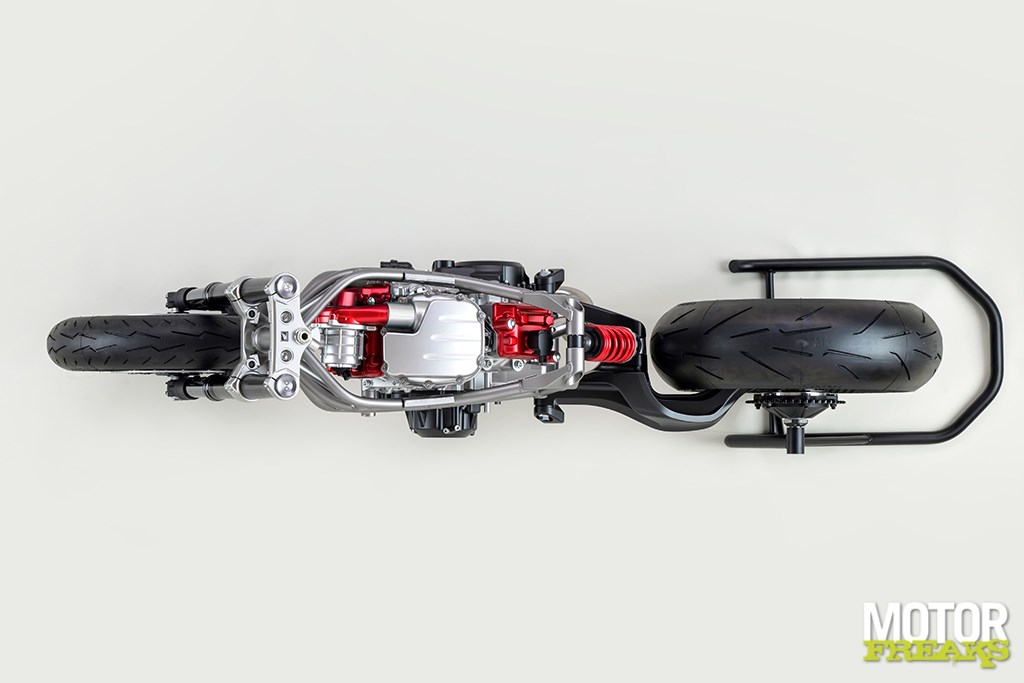
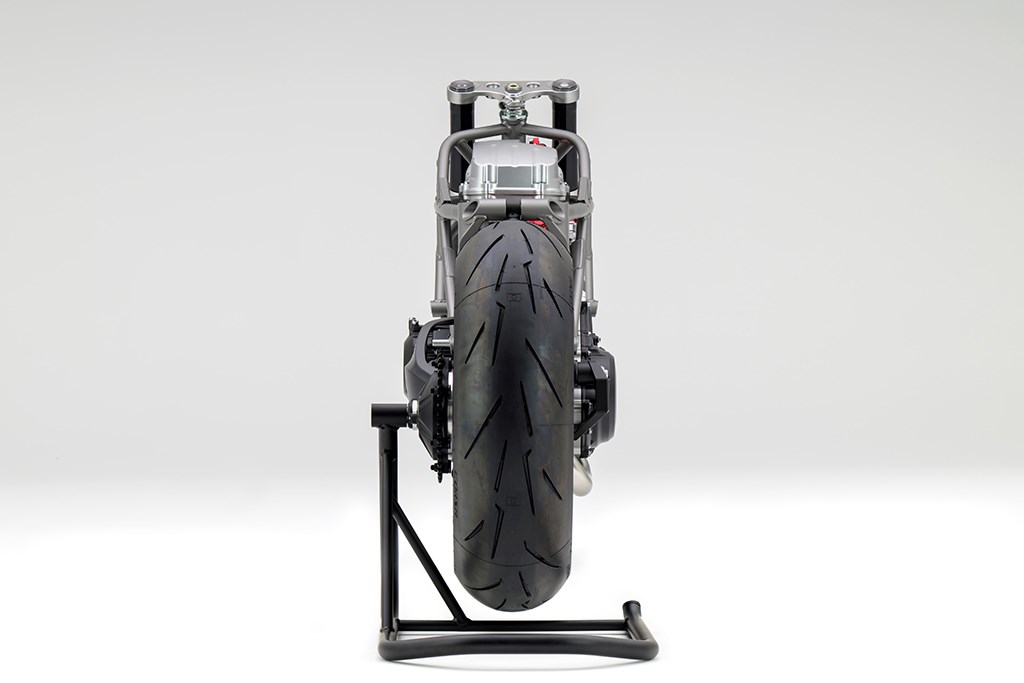
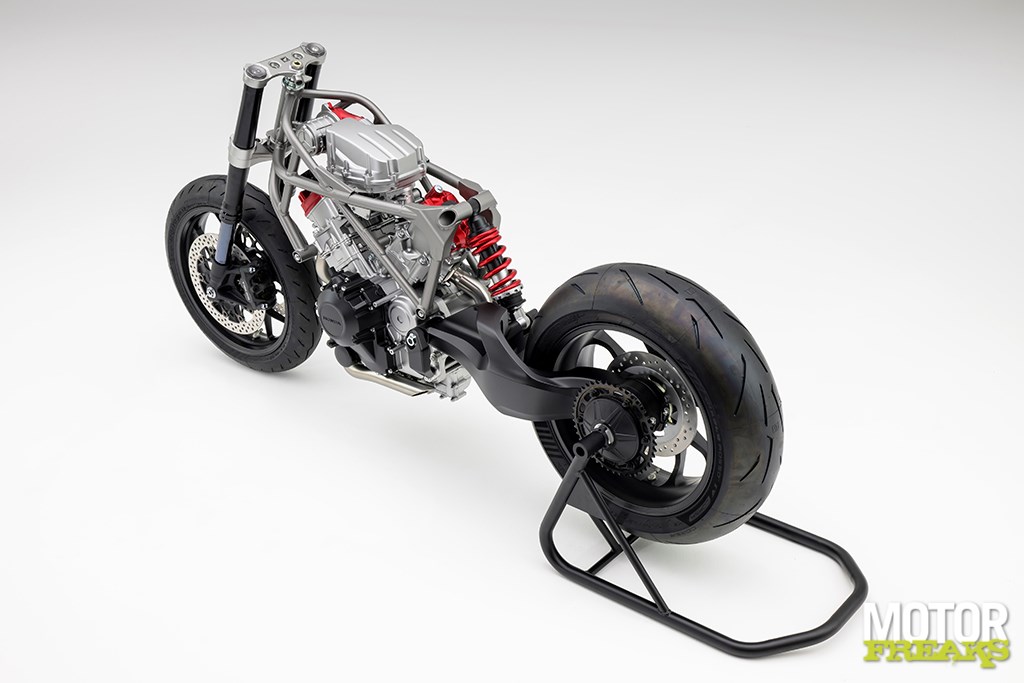
– Thanks for information from Motorfreaks.